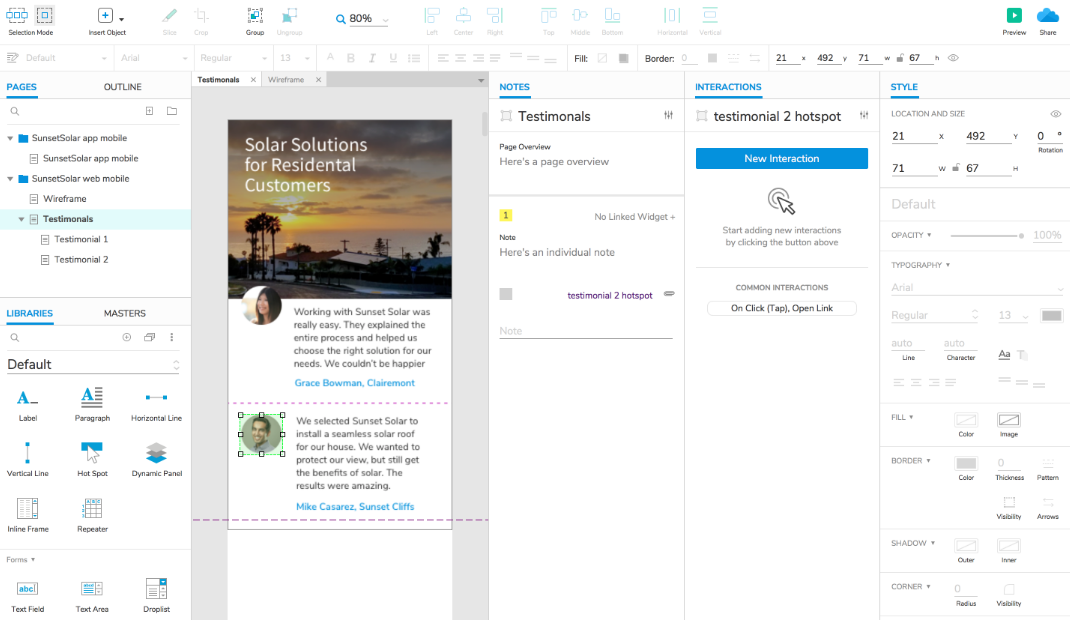

Multiply this process by the number of wireframes in your project, and the magnitude of the effort becomes clear and daunting.Īs the UX design is inherently an iterative process, the specifications update process is a real drain of time, money, and energy, which is bad for everyone involved in the project. If you update the wireframe, you have to retake the screen capture, save, replace its version in Word, and update the annotations. If you ever created a specifications document the traditional way by using Visio, Word, and a screen capture utility, you know the drill-a tedious process that involves adding footnote tags to Visio wireframes, taking screenshots of these wireframes, saving them, importing them to Word, and finally, writing the relevant annotations. I also realized that, in addition to being able to create interactive prototypes, Axure helped me deal with a major chore-creating and updating the user interface functional specifications document. Within a few hours, I had my first prototype running, and since that day, I never looked back, and have since rarely used Visio, my previous wireframing tool. As someone who does user experience for a living, Axure afforded me my own user experience. I did not need to spend months to learn a programming or authoring language. What struck me then, and continues to excite me today, was the freedom to design, test, iterate, and present fully-clickable interactive prototypes. In fact, my motivation to write this book has been shaped by my personal experience with Axure, since I started using it back in 2007.

I find Marshal McLuhan's insight to be especially intriguing in the context of tools that help us conceptualize and express user experience.

"We shape our tools, and thereafter our tools shape us."-Marshal McLuhan Although some aspects of the prototyping process are simplified for the sake of clarity and efficiency, the demo project is an opportunity to discuss in context and in sequence topics such as addressing business and technical requirements, handling use cases and flow diagrams, low and high fidelity wireframe construction, interactivity, writing annotations, generating detailed UX specifications, and traceability.įor the most part, Axure 6 RP Prototyping Essentials can be read in sequence or used as a reference guide. You may not be in a position to change how projects are scheduled, budgeted, and managed, but you can be more creative and productive by mastering one of the leading UX tools in the market.Īfter an initial introduction to Axure’s user interface, terminology, and features, this book walks you through a medium-size UX project: a digital library that sells books, newspapers, and movies.
AXURE RP PRICING HOW TO
You will learn to use Axure for producing top-quality deliverables and tackling the demands of rapid iterative UX projects of any complexity and size, and for any platform and device.Īxure RP 6 Prototyping Essentials takes a very pragmatic approach to showing you how to use Axure and produce impressive deliverables while saving labor and time. Whether you are an individual practitioner or a member of a UX team, a consultant, or an employee, this book will teach you how to use Axure, one of the leading UX tools. However, prototyping in Axure is strikingly different from the conventional method of producing static wireframes and to rapidly develop interactive prototypes in Axure, you’ll need to have a good understanding of the tool and its features. Given these circumstances, Axure is quickly taking over as the preferred tool for prototyping. They are also the most labor and time intensive to produce due to constant changes in business requirements. Wireframes, interactive prototypes, and UX specifications are among the fundamental deliverables of every UX project.


 0 kommentar(er)
0 kommentar(er)
